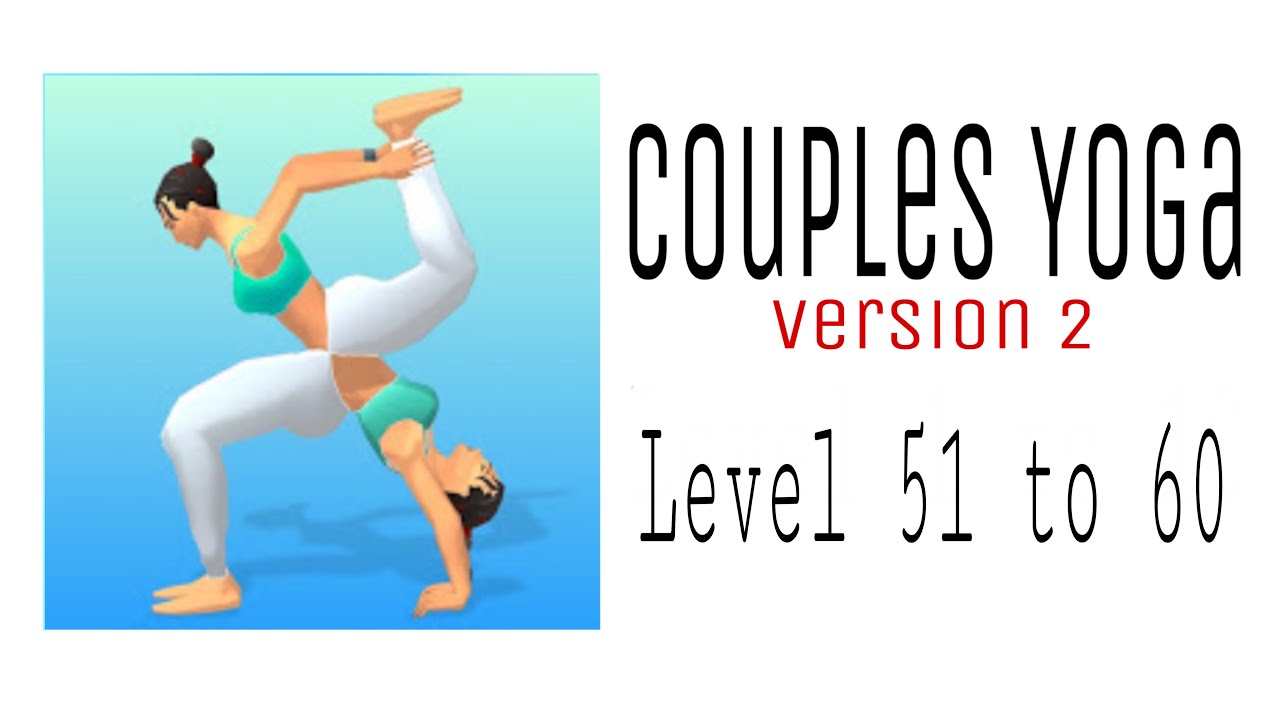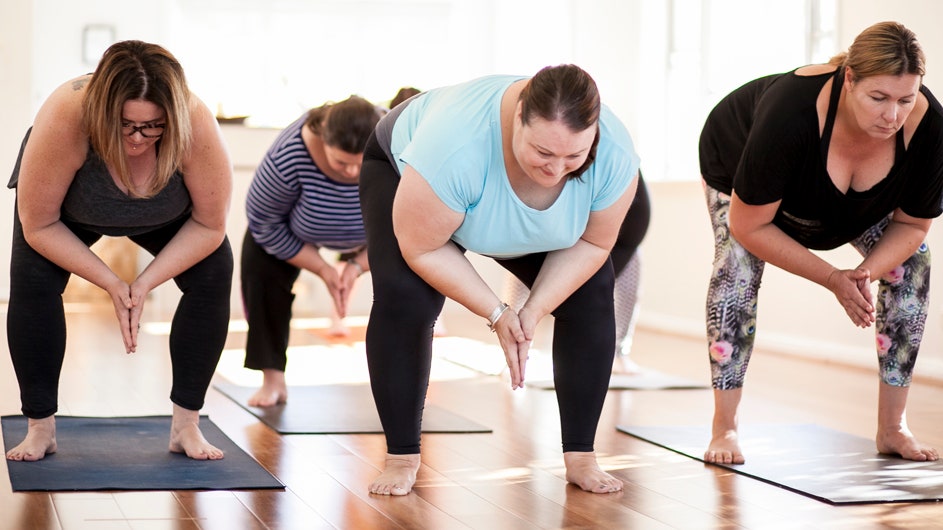
Many poses can cause strain to the shoulders which can result in injuries. Understanding the anatomy of the shoulder joint is essential before beginning a new type of yoga. The three bones that form the shoulder joint include the scapula or shoulder blade, the clavicle (collarbone), and the upper arm bone, the humerus. These bones meet at the elbow joint, and each one has a unique range of motion.
Quads are the muscles responsible for knee extension. The gluteus maximus and the front and back thigh muscle are joined by the gluteus maximus. These muscles are responsible for hip flexion, abduction, and hip flexion. These are just four muscles that are important for yoga poses. Without looking at these two muscles individually, it is easy to understand why each one is so important. As you move through the different poses in your practice, you'll be able to feel how each is involved in a particular yoga pose.
The hamstrings control knee extension. They are derived in part from the ischial tubrosity found in the pelvic box. They also contribute to hip extension. These muscles are vital to many of the yoga poses. However they can be difficult for some to access if they are not properly aligned. Adding your arms to your chest will make it more difficult, but will improve your balance and give you more flexibility. You can move on to the next step once you have a better idea of the anatomy and how the hamstrings work together.

The hamstrings, another part of the body that yoga can help, are also a good place to start. The hamstrings are responsible for knee extension, and they originate from the ischial tuberosity in the pelvic bowl. They are also responsible for hip flexion, and plantarflexion. The hamstrings are important for many yoga poses because they are responsible for many different movements in the body. This will help you choose the best one for you.
It is important to not strain the SI joint too much when performing the balancing poses. The goal should be to maintain a steady, balanced range of motion with a strong core. It is also important to pay attention to the alignment of your pose. If a joint is overstretched, it will cause pain in the knee. This can lead to an injury. You can use props to help you align more properly.
Overmobilized scapulae - While it may appear as a twist, this is not always the case. The arm's position can also influence the spin of the spine. If the meniscus is fully flexed, it moves towards the back of your joint. A properly aligned pelvis will allow the body's muscle to work in the right direction. You should have a balanced distribution of your spine and hips.
For a smooth range of motion at the knee joint, the pelvic joints must be flexed. You should keep your pelvis and scapula in neutral. The pose may cause spinal flexion and injury if they are not. It is best to avoid this position if this happens. While your leg is straight, push the meniscus to the rear of the joint.

The pelvis consists of three bones called the femur and the thighbone. They are round and have a cup shape. The head is found in the pelvis. It is a round bone located at the top end of the thigh. The lower leg bones also meet in the femur. Each of these three bones has a slightly different shape and angle. This can affect how easy and strong some yoga poses are.
The anatomy of the yoga poses is vital for beginners. You will find it easier to perform the correct postures when you are more familiarized with your body. David Katz, a world-renowned author on anatomy and yoga, has written the book Anatomical Position. He describes the anatomy of key yoga poses, and the effects they have on the body. You can understand the anatomy and apply it in your daily life.
FAQ
Do I have the obligation to exercise every day or just on occasion?
No! You should do at least 30 mins of moderate-intensity activity 5 days per week. This means that you should be able to walk fast enough to feel slightly out of breath, or bike hard enough to sweat.
What does butter do for men?
Butter is one of the best sources of saturated fats. This fat is good for hair and skin health, as well as stronger bones.
Vitamin K, found in butter is an antioxidant that prevents bleeding from cuts. Vitamin K works together with vitamin C to prevent bruising.
Butter is also rich with minerals, such as calcium and phosphorous. These elements encourage stronger bones.
Butter has its drawbacks. Butter has high cholesterol. A few studies have shown that too much cholesterol can increase the risk of developing coronary disease.
Butter also contains high amounts of saturated fat, which contributes to obesity and increases cholesterol.
However, if you must have butter, try spreading it on bread rather than dipping it into soup or salad. Bread absorbs more oil than potatoes or pasta.
What diet supplement is best to lose weight?
You need to exercise and diet in order lose weight. Some people find that supplements can help them along the journey.
Studies have shown that omega-3 fatty acid may be beneficial in weight loss. Omega-3s, essential fats, are critical for brain function and cell membrane health. They are found in fish like salmon, tuna, shrimp and cod liver oil.
Green tea is being studied for its potential benefits in weight loss. Green tea has catechins, which are antioxidants that can help increase metabolic rate and encourage weight reduction.
What is the best way lose weight?
Losing weight is easier said than done. Many people give-up easily because they don’t have the right information.
However, there are some simple steps that you can take to shed those extra pounds.
First, ensure that you consume fewer calories per day than you burn. If you consume more calories than what you burn, you will gain weight.
To burn all those calories, you should also start exercising. There are many types of exercise you can do, such as walking, running, cycling, and dancing.
Third, you must stop smoking cigarettes and drinking alcohol. These habits can cause you to consume more calories that you would otherwise.
Fourth, it is important to reduce the consumption of junk food and fatty foods. You can replace them with healthier options such as fruits, vegetables, lean meats, whole grains, nuts, seeds, beans, etc.
Fifth, you need to change your lifestyle and adopt new habits. For example, you may need to get up early every morning to exercise before work.
Sixth, you must be disciplined and follow your diet plan.
Lastly, you can join a gym or attend an aerobics class to burn those excess calories.
You'll quickly start to notice results if you follow these simple tips.
How quickly can I transform the body of my child?
Change your mindset is the first step. First, you must decide to make a change.
Once you have decided you want to make changes, you will need to commit to your fitness goals at least for 3 months.
The next step is to find the right program for you.
You also need to set realistic expectations. If you are not ready to dedicate the time and effort to reach your goal, do not spend money on a gym.
Instead, exercise outdoors in your own time.
Walking around the block for an hour per day will help you lose 1 lb in a week.
Now that you know what you're going to do start planning how you will organize your life to fit this new plan.
You should make sure you set aside time each morning to exercise and that you take breaks throughout your day to move.
Finally, you should reward yourself when you reach milestones. You might be able to buy clothes and accessories that reflect your accomplishments.
Statistics
- According to the American Academy of Dermatology (AAD), men over 50 are at a heightened risk of developing it. (healthline.com)
- By John Thompson Take a whopping 38% off a set of PowerBlock Pros. (menshealth.com)
- An estimated calorie range for moderately active adult males falls between 2,200 to 2,800 calories per day, depending on age. (eatright.org)
- The PRS enabled risk stratification for overall prostate cancer and lethal disease with a four-fold difference between men in the highest and lowest quartiles (HR, 4.32; 95% confidence interval [CI], 3.16-5.89). (pubmed.ncbi.nlm.nih.gov)
- Candidates and applicants must pass all four tests at 70% (minimum level) to graduate from Basic Deputy U.S. Marshal (BDUSM) Training. (usmarshals.gov)
External Links
How To
How can a man lose weight in just 30 days.
Breaking down your fitness goals into manageable steps is the best way to reach your goals.
Every day, you must work towards your goal. This could mean doing 10 pushups every 5 minutes or running 3 km.
If you do this consistently over time, you will see positive results.
Be consistent is key. You have to keep at it until you succeed!
What is the difference between Aerobic Fitness and Anaerobic Fitness?
Anaerobic fitness refers the body's ability to do intense physical work while lacking oxygen. Anaerobic pathways can be used to supply enough energy during high-intensity exercise. Anaerobic pathways are glycolysis, creatinephosphate and the phosphagen.
In contrast, aerobic fitness refers to sustaining continuous low-intensity exercise. When performing aerobic exercises oxygen is used to fuel the cells. In other words, aerobic pathways provide more energy than anaerobic.
To run a marathon you need to first increase your aerobic capacity. You won't be successful if you focus only on your anaerobic ability.
Aerobic fitness may also be known as cardiovascular fitness. Step tests and VO2 max testing are the most popular methods to measure cardiovascular fitness.
VO2 Max Test
VO2 max refers to the maximum amount of oxygen (O2) used by the body during exercise. This test measures how much oxygen the body can use while exercising.
This test can measure your cardiovascular fitness accurately. However, the test can only be administered by highly trained professionals and requires expensive equipment.
Step Tests
Step tests are a simple but effective way to measure cardiovascular fitness. Based on your age and weight, they involve running or walking on a track or treadmill for a specified time.
These tests are inexpensive, easy to conduct, and can be done almost anywhere. You can, for example, walk for 2 minutes on a treadmill, then rest for 1 min, then repeat the process for 20 minutes. Then, stop. Your heart rate should remain within a specific range throughout the whole session.
This is the "Bruce Protocol". Bruce was himself a runner and developed the protocol after realizing his heart rate wouldn't increase when he ran for longer distances.